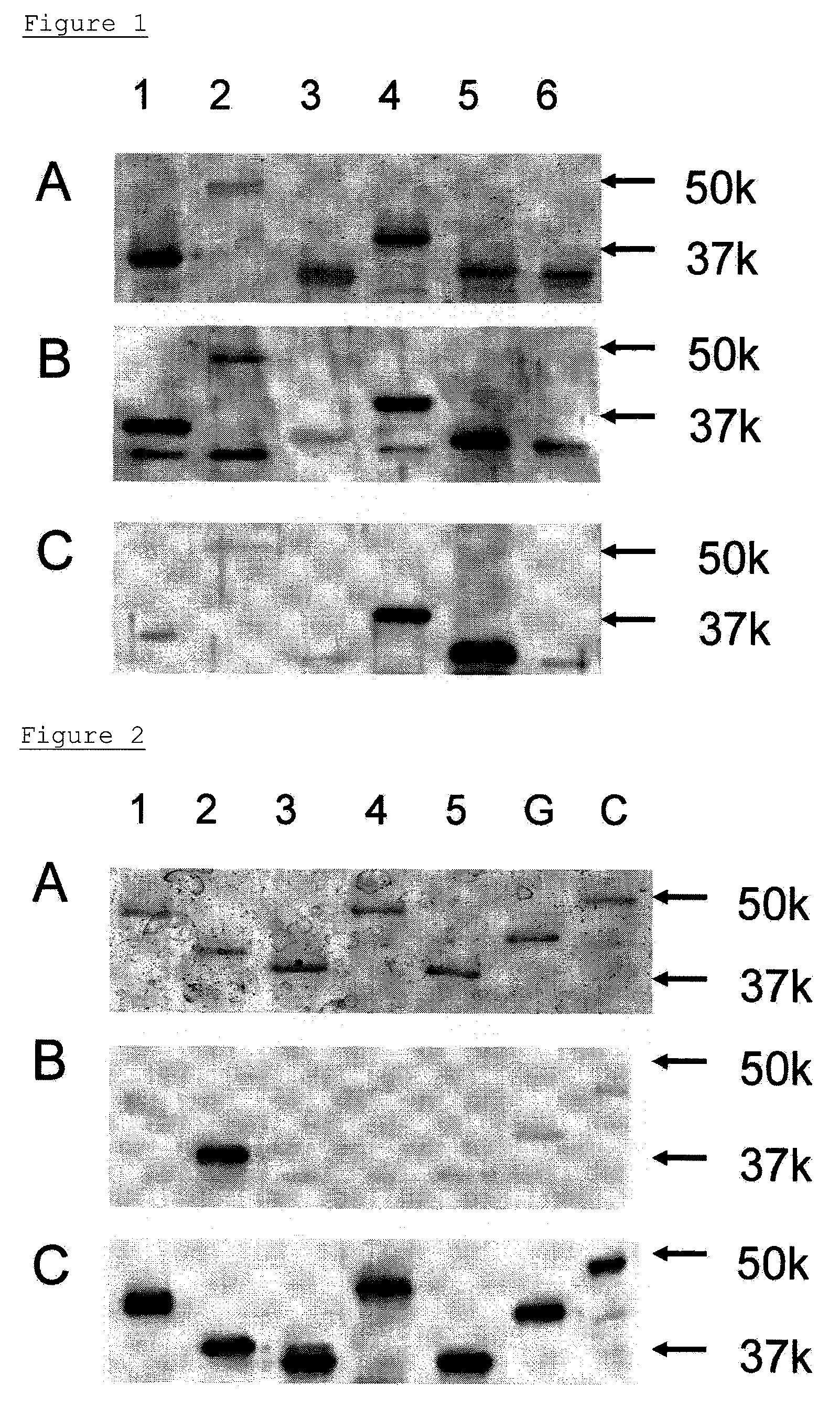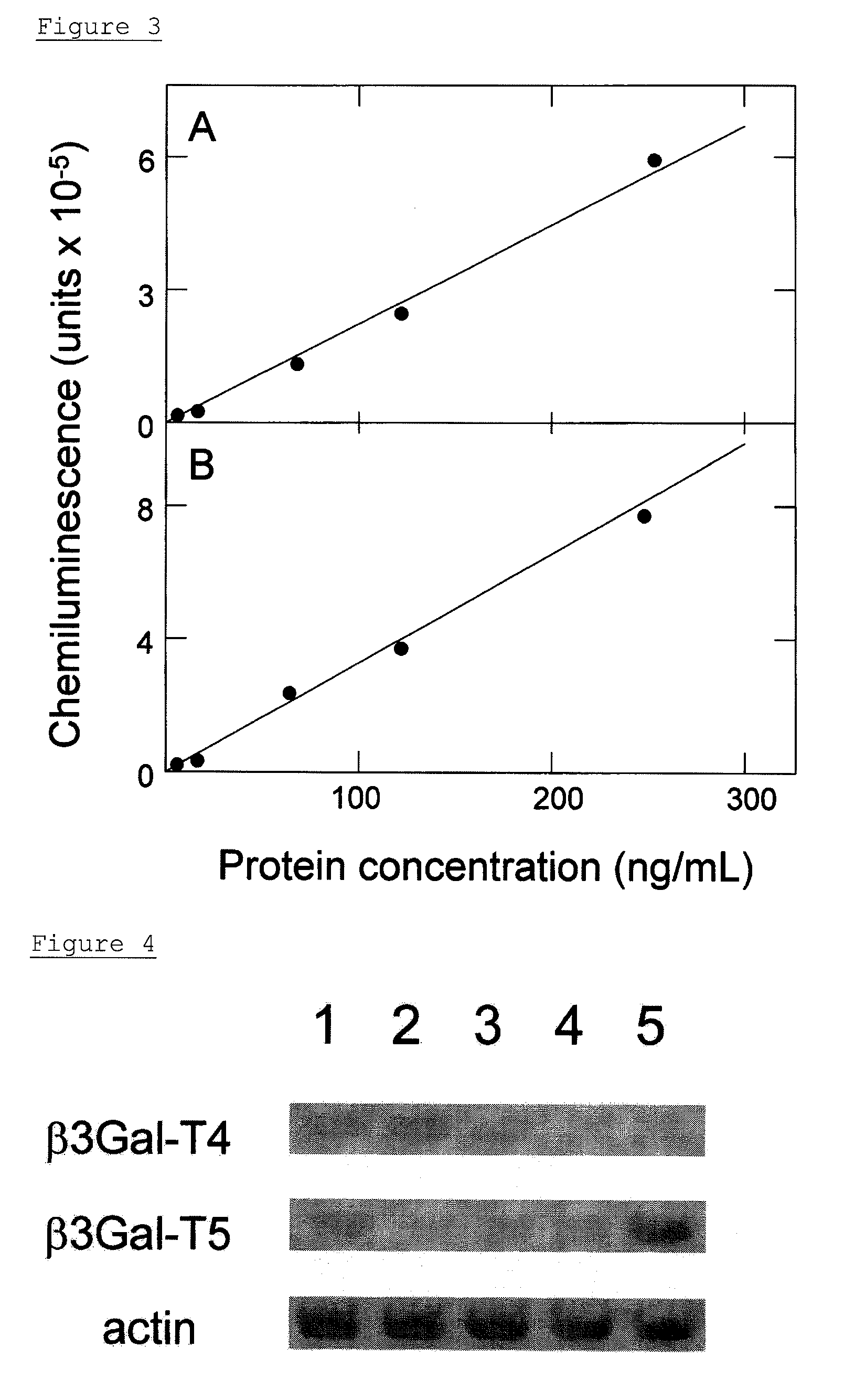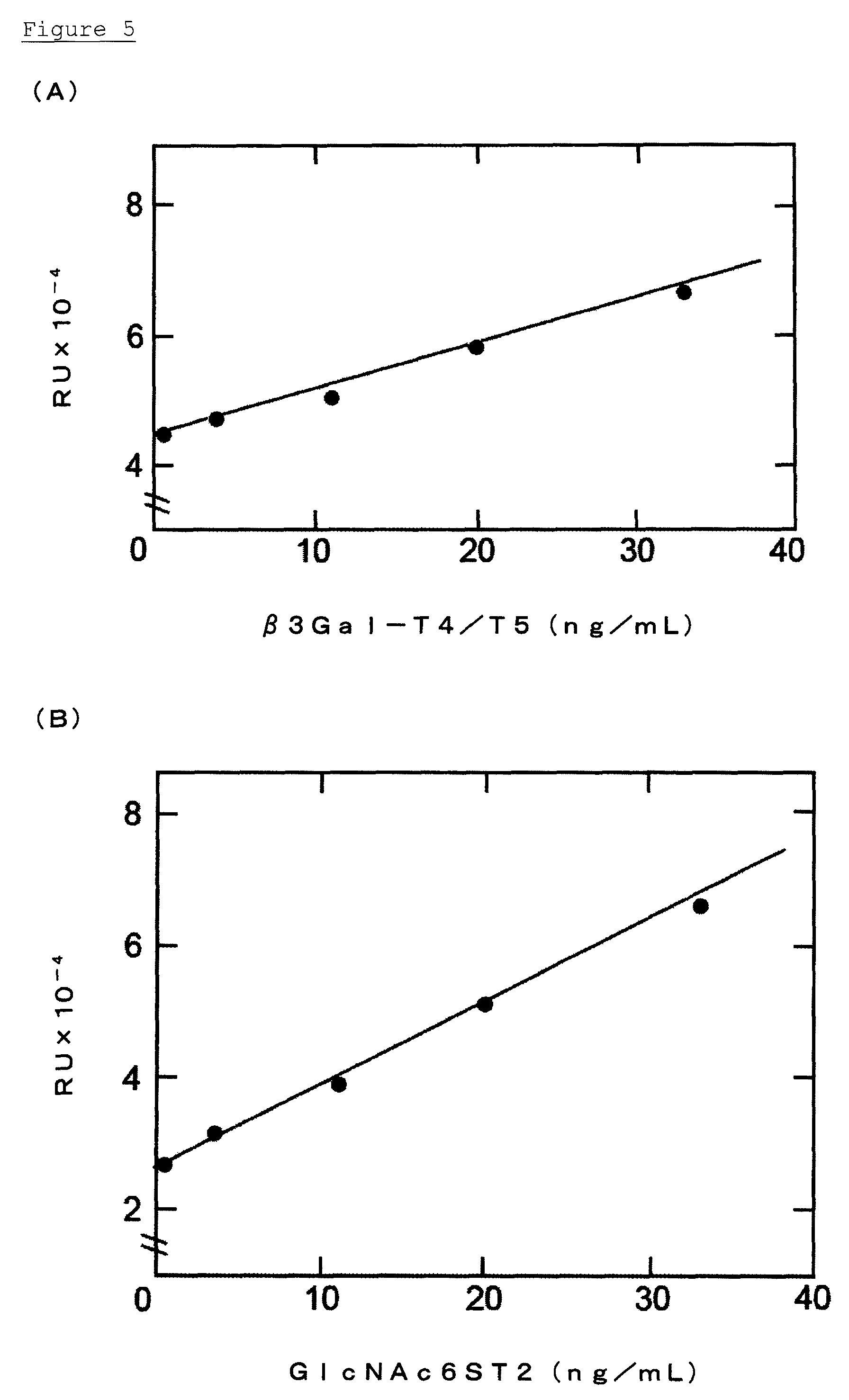Method for detecting gynecologic cancer
a gynecologic cancer and detection method technology, applied in the field of gynecologic cancer detection, can solve the problems of difficult to find cancer, low positive rate of ca125 in ovarian cancer patients at an early stage, and extremely low survival rate of such patients, so as to achieve high detection rate and high detection rate. , the effect of significant increase in the detective rate of ovarian cancer
- Summary
- Abstract
- Description
- Claims
- Application Information
AI Technical Summary
Benefits of technology
Problems solved by technology
Method used
Image
Examples
example 3
Preparation of GlcNAc6ST-2 Antibody
[0113](A) Preparation of Soluble form of GlcNAc6ST-2 (Preparation of Antigen for Immunization)
(A-1) Construction of GlcNAc6ST-2 Expression Vector
[0114]A cDNA fragment encoding a peptide lacking cytoplasma and transmembrane domains was amplified by PCR. The PCR was carried out using a full-length cDNA prepared previously (Glycobiology, 2002, 12, p. 379-388) and the following Forward primer for GlcNAc6ST2 and Reverse primer for GlcNAc6ST2. The obtained cDNA fragment encodes a peptide consisting of the 28th to 386th amino acids in the amino acid sequence of GlcNAc6ST-2.
Forward primer for GlcNAc6ST2:5′-tttgtcgacAGCCACAACATCAGCT-3′(SEQ ID NO: 17)Reverse primer for GlcNAc6ST2:5′-tttaagcttAGTGGATTTGCTCAG-3′(SEQ ID NO: 18)
[0115]In the above sequences, the sequences in lowercase letters contain appropriate restriction sites to be fused to an expression vector. The obtained cDNAs were inserted into a cloning site of pQE9 vector (QIAGEN GmbH, Hilden, Germany)...
example 4
Construction of Sandwich ELISA of β3Gal-T5 and GlcNAc6ST-2
[0124]Construction of an immunoassay system for β3Gal-T5 and GlcNAc6ST-2 were performed by a sandwich ELISA method using the monoclonal antibody and polyclonal antisera obtained by immunizing the β3Gal-T5, and by using the monoclonal antibody and polyclonal antisera obtained by immunizing the GlcNAc6ST-2.
(A) β3Gal-T5 Detection System
[0125]50 μL of b3Gal-T5 monoclonal antibody, which had been diluted to a concentration of 1 μg / mL with a PBS, was added to 96-well black high-binding plates (Corning Inc., Corning, N.Y.), and was immobilized at 4° C. for 16 hr. The surface of each well was blocked with PBS containing 1% BSA at 25° C. for 1 hr. The non-denatured β3Gal-T5 (E. coli) as reference materials, was diluted to a concentration of 250 ng / mL, 125 ng / mL, 62.5 ng / mL, 16 ng / mL, and 4.0 ng / mL with a diluent wherein 1% BSA had been added to PBS-0.1% Tween-20 (PBS-T). Then 50 μL of the non-denatured β3Gal-T5 (E. coli) was added to ...
example 5
Measurement in Sera of Ovarian Cancer Patients Using β3Gal-T5 Detection System
[0130]Sera of 60 cases of ovarian cancer patients and sera of 8 samples of healthy adult women were measured using the β3Gal-T5 detection system. The sera of the ovarian cancer patients to be used in the measurement were obtained from ovarian cancer patients of stages I to IV which were confirmed by abdominal operation. In the 57 cases, it was possible to determine the histological types of ovarian cancer by using histological examination. Any cancer developments other than ovarian cancer were not confirmed in these ovarian cancer patients.
[0131]Step (A) in Example 4 was repeated, except that the sera of patients and of healthy persons diluted with PBS-T by a factor of 10 were used instead of non-denatured β3Gal-T5 (E. coli). The amount of β3Gal-T5 in the sera was determined by the standard curve (A) in FIG. 3. The value of an average+2SD in healthy adult women was defined as a cut-off point, and it was de...
PUM
| Property | Measurement | Unit |
|---|---|---|
| pH | aaaaa | aaaaa |
| v/v | aaaaa | aaaaa |
| volume | aaaaa | aaaaa |
Abstract
Description
Claims
Application Information
 Login to View More
Login to View More - R&D
- Intellectual Property
- Life Sciences
- Materials
- Tech Scout
- Unparalleled Data Quality
- Higher Quality Content
- 60% Fewer Hallucinations
Browse by: Latest US Patents, China's latest patents, Technical Efficacy Thesaurus, Application Domain, Technology Topic, Popular Technical Reports.
© 2025 PatSnap. All rights reserved.Legal|Privacy policy|Modern Slavery Act Transparency Statement|Sitemap|About US| Contact US: help@patsnap.com



